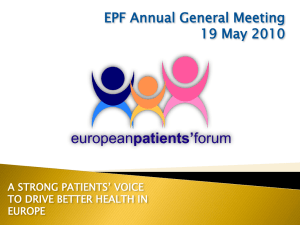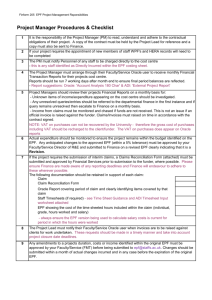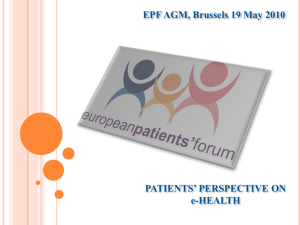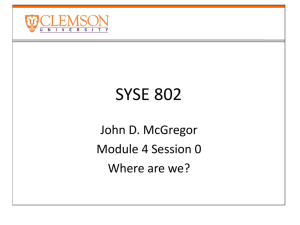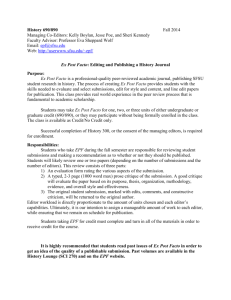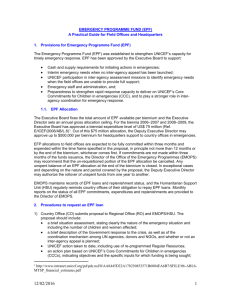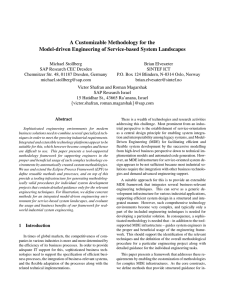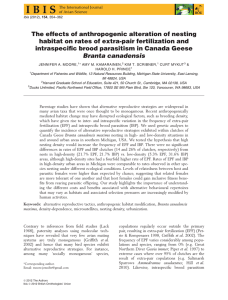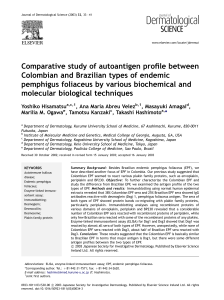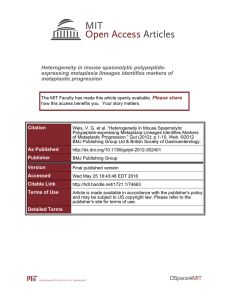SYSE 802
advertisement
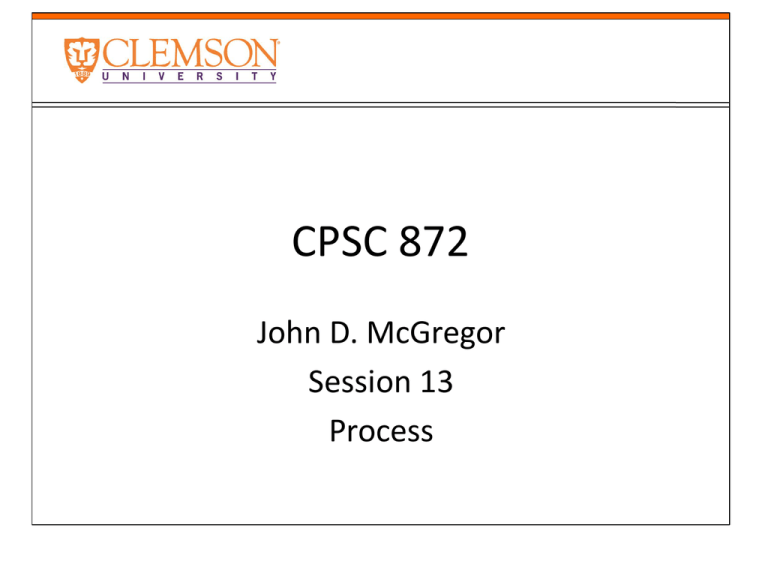
CPSC 872 John D. McGregor Session 13 Process Specification and design specification problem specification solution implementation URLs for class • http://www.omg.org/news/meetings/worksh ops/SWA_2007_Presentations/04-2_HarperParkinson.pdf • http://people.cs.clemson.edu/~johnmc/cours es/Publish/index.htm Rational Unified Process • Several process models were brought together hence the “unified” in unified process • This view emphasizes that each discipline is related to others Example WBS • Here is a WBS done in the EPF tool • Two main phases are decomposed in this example • There is a hierarchy of Phase, Activity, and Task. Each is a subset of the previous. Improving processes • A process can be measured, modified, and then used again to determine whether the process is “better.” • To accurately describe and measure a process an exact description is needed. • The OMG has defined the Software Process Engineering Meta-model (SPEM). • The Eclipse Process Foundation (EPF) is an Eclipse-based tool. Meta-model structure The SPEM is divided into packages. We will look at these in more detail through out the course. For now just look at the top level. The meta-model includes the plugin concept as a way of extending incrementally. EPF 2 1 3 EPF - 2 • 1 – The EPF workspace is structured following the SPEM. • 2 – Each page has numerous fields which must be filled in to give a complete view. • 3 – The tabs at the bottom give access to differ methods of extending each page definition. Organizing • Software engineers structure their activities around processes. • The SPEM gives a vocabulary for describing these processes. • EPF provides 4 major categories: – Roles – Tasks – Work products – Guidance Roles • A description of a collection of related tasks taken on by a person • Architect is a role performing a set of related tasks. • A person may take on multiple roles Tasks • A task is a piece of work • It is assigned to a person who has assumed the appropriate role. • Creating the software architecture is a task for the architects. Work products • This is the output of some task. • It is produced by a person who has assumed the appropriate role. • It is the result of following a process. • The architecture is a work product produced by architects. Guidance • These are descriptions of how to do something. • How do you create an architecture? • How do you write code? • Tutorials, white papers, … EPF • The EPF tool defines a number of pages that represent different types of information. • There is one for each type of element and there are many types of guidance. • The ultimate goal is to define processes so on the next slide is an example of a delivery process definition. • Each page has multiple tabs. Two slides forward is an example of one tab from the delivery process. EPF 2 1 3 3 steps • Click on the “OpenUp” library and it will show: – Method content – Processes • The method content has: – Content package – Standard categories – Custom categories Content package • This contains the four basic pieces – Role – Task – Work product – Guidance • Take a look at each type of page to see what you can specify • The PLBootstrap package has several examples of each. Custom categories • A custom category allows the user to combine other elements like roles and work products. • This will be used to form combinations later. • For example I could define an architecture team and aggregate several role descriptions for slightly different roles on the team. Processes • Capability Patterns – Define a reusable pattern of process definition • Delivery Processes – Combine capability patterns and basic content to form a process that works • Again look at examples in PLBootstrap Configurations • The final assembly is termed a configuration • The configuration allows you to attach “views” which are the custom category pages mentioned earlier. • A configuration can be “published” which actually creates a web site. • This is the method for showing others our model. A Delivery Process Consolidated View Role definition page Role definition web page Configuration Organizing information • Much of the information in this course can be organized according to the SPEM. • Begin now to capture information using EPF. • Unfortunately there is still no Mac version of EPF, just Windows and Linux. • There is a 2 part tutorial at www.eclipse.org/epf • Develop a specification and design process that you document in EPF. • Submit url for published website by 11:59PM Oct 15th.
